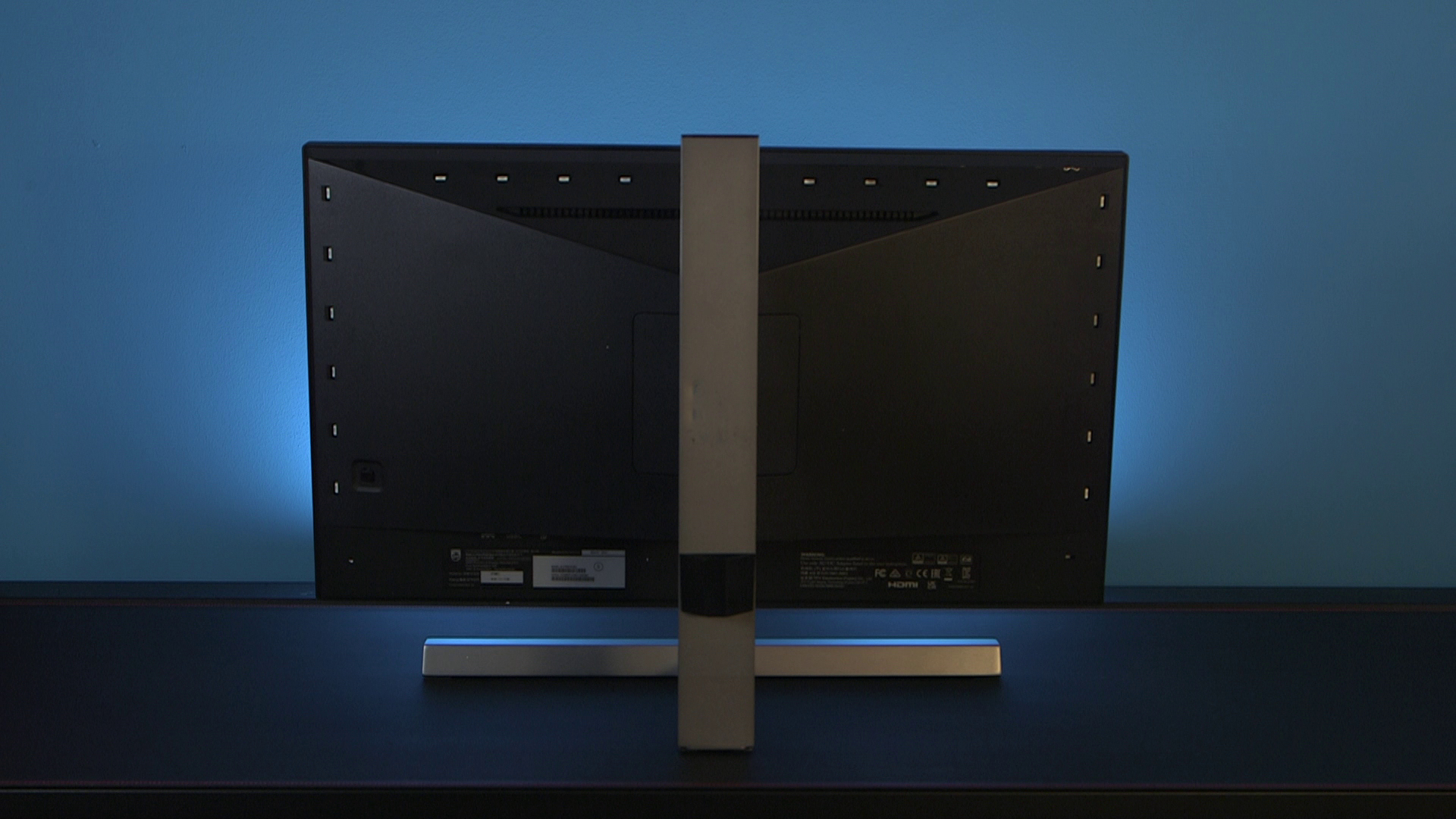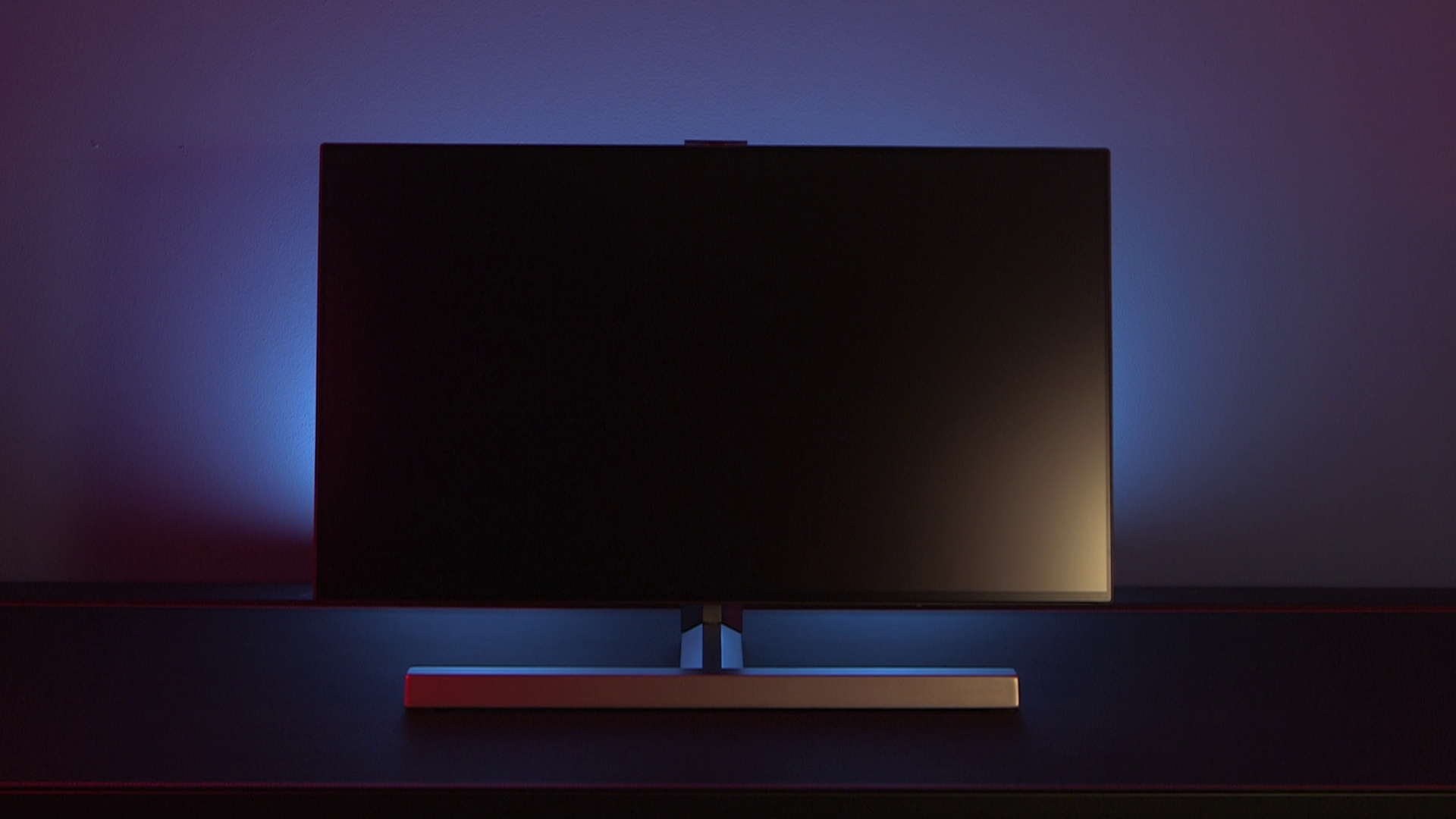Our Verdict
A bright and vivid 4K gaming monitor with heaps of connectivity and HDR for next-gen consoles. It's a bit bland-looking, and the Ambiglow is a little underwhelming, but it sits at a great price point for the spec.
For
- NanoIPS has colour/brightness/black level advantage
- Not a terrible price for 4K at 144Hz
- Both FreeSync and G-Sync
- HDR 600 with 16 edge-lit dimming zones ain't terrible
Against
- Weak built in speakers
- Ambiglow delay is a little distracting
PC Gamer's got your back
As a sub £800 4K gaming monitor, you'd expect the Philips Momentum 279M1RV to cut a couple of corners with its design. And while there are some minor features that Phillips has dulled down to keep the cost from skyrocketing, this gaming monitor has a few tricks tucked behind its nifty Nano IPS panel.
The big win for me comes in the form of the Philips Momentum 279M1RV's 144Hz refresh rate and blinding 1ms grey-to-grey response time. It's made competitive gaming a cinch for me on my high-end gaming PC, and at the same time, console gamers certainly haven't been forgotten about. In fact, the Momentum's marketed as optimized for next-gen console gaming. Around the back, it has not one but three HDMI 2.1 ports, which means console gamers can keep a vast setup connected and go up to 120Hz with each platform connected.
DisplayHDR 600 specification means it delivers better than some in this price range on HDR performance, and although it still can't match a TV with full-array local dimming or OLED, it's on par with the 16 edge-lit local dimming zones of the LG 27GN950-B—one of our top rated gaming monitors. It's not true HDR, but console gamers will undoubtedly appreciate the thought.
Screen size - 27-inch
Panel technology - Nano IPS
Native resolution - 4K
Refresh rate - 144Hz / 120Hz via USB Type-C
VRR - AMD FreeSync and Nvidia G-Sync support
Response time - 1ms
Contrast - 1,000:1
Brightness - 450 nits
Inputs - 3x HDMI 2.1, 1x DisplayPort 1.4, 1x USB Type-C
Other - 1x USB Type-B upstream, 4x USB Type-B 3.2 downstream (2 fast charge), 3.5mm audio, 2x 5W speakers
MSRP - £720
Playing around with it, even with Philips' SmartResponse (overdrive) turned off at 120Hz, there was hardly a whiff of ghosting, and hopping the setting up to 'faster' makes for a sharp-as-razors image. On its 'fastest' setting, however, SmartResponse caused a bunch of inverse ghosting issues and a bit of color distortion—probably best to stick with 'faster,' in particular for gamers with older consoles who want to keep the refresh at 60Hz. At that rate, you can get away with the minor blur on 'fast,' but overshoot is much more visible on 'faster.'
All this is topped by the addition of both AMD FreeSync and Nvidia G-Sync support, both of which are always a welcome feature to a gaming monitor.
Using it daily with my PC was a streamlined experience; the joystick on the back is a much smarter way to navigate the OSD menu for changing modes and settings, rather than the ever confusing button array I'm so used to. The addition of USB Type-A upstream for turning it into a USB dock is great, and I'm stoked that Philips added a USB Type-C with the ability to fast charge up to 65W. I could quickly charge a controller, phone, or even the Steam Deck with it.
The Philips Momentum 279M1RV's sRGB mode sadly only works at 100% brightness and tends toward a cooler-looking image, but at around 99.6% coverage and 143.2% volume, it's not a terrible feature. Peak brightness is around 650nits, which is great for working in a bright room. The black levels are better than a lot of panels with this level of brightness, too—even at low brightness, the black levels negate some greyness caused by backlight bleed.
That's thanks partly to using NanoIPS technology, which has also done the Philips Momentum some favors on the color side of things. Vivid visuals are clear across the panel, and it's possible to calibrate for some pretty high color accuracy. The company has even added in an eyecare mode for comfortable nighttime viewing.
Speaking of which, this monitor also comes touting Phillips' Ambiglow feature. In its ambient state, it's alright—not so much when it's blinding my co-workers, even in the brightly lit office—but it looks pretty sweet in the dark. When you try to get it to sync up with games, however, there's such a discernable delay that it actually tends to become a detriment to my gaming experience.

As for the design, the stand is a little on the conservative side. Its gunmetal finish glints gently under the Ambiglow lighting, but the thing's quite blocky and a little authoritarian—looking more like it was designed on Vogsphere, compared with the more edgy designs of many gaming monitors of today. Fair play if that's your style, but you should know there's no way to rotate it into portrait mode for scrolling through your endless, unformatted spreadsheets. There is 130mm of height adjustment, however, 35 degrees of left/right pivot, and a 20 degree backward tilt.
The 5W speakers don't do the thing too many favors, either, and it would have been nice to see an improvement here rather than opting for sub-par Ambiglow. Also the fact it's only available in the UK is a little sad. Still, while the Philips struck out in the wrong direction with a few of the Momentum 279M1RV's features, that doesn't change the fact this is a punchy, vibrant, and speedy monitor.
It would be a darn shame not to make the most of at least two of those HDMI 2.1 ports on the back, so those who play console at their desks should seriously consider the Philips Momentum 279M1RV… even if it does look like the wrong end of a Vogon constructor ship.
A bright and vivid 4K gaming monitor with heaps of connectivity and HDR for next-gen consoles. It's a bit bland-looking, and the Ambiglow is a little underwhelming, but it sits at a great price point for the spec.

Screw sports, Katie would rather watch Intel, AMD and Nvidia go at it. Having been obsessed with computers and graphics for three long decades, she took Game Art and Design up to Masters level at uni, and has been rambling about games, tech and science—rather sarcastically—for four years since. She can be found admiring technological advancements, scrambling for scintillating Raspberry Pi projects, preaching cybersecurity awareness, sighing over semiconductors, and gawping at the latest GPU upgrades. Right now she's waiting patiently for her chance to upload her consciousness into the cloud.


